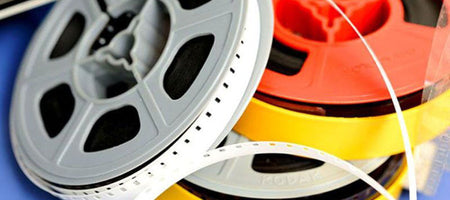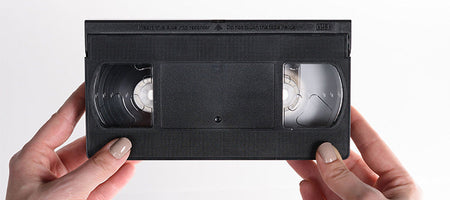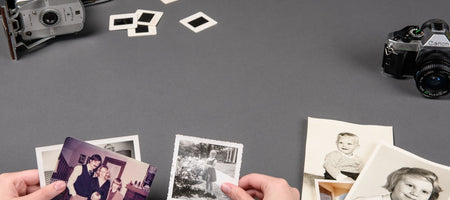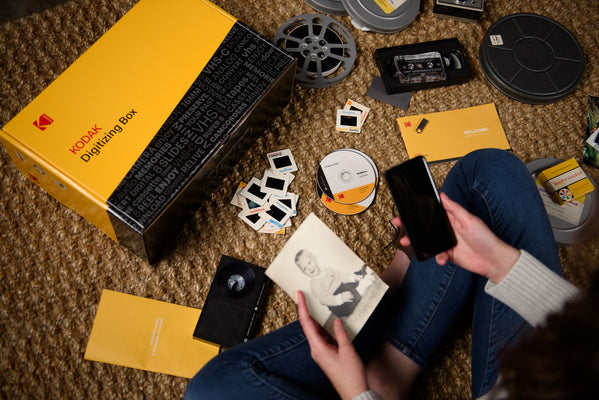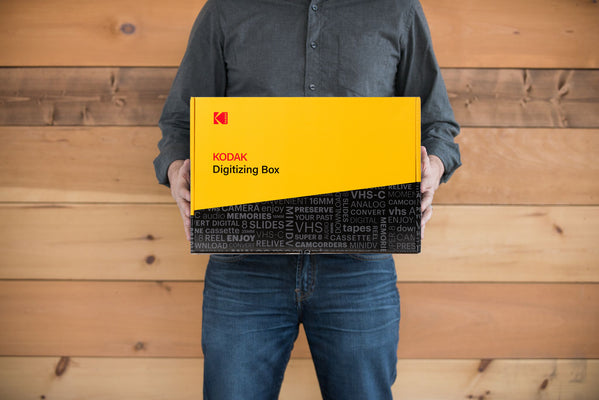Now that we all carry miniature computers in our pockets, it’s easy for us to whip out our smartphones at any time to capture special moments with a quick photo or video. Uploading our pictures and videos to social media takes almost no time, and sending media to friends and family is easy with messaging and email. We record our lives now more than ever before, and it’s difficult to imagine a time when it took a lot more effort to get something on camera.
It hasn’t been that long since camcorders were the reigning media capture format.
The first camcorder was introduced on the market only 36 years ago, and plenty of us grew up with those big, robust camcorders always pointed at us during dance recitals, soccer games, and school graduations. The best, and sometimes most awkward, moments of our lives were recorded onto cassette tapes for our future watching pleasure. Lots of families still have those old tapes lying around the house, holding precious memories from years past.
Many camcorder brands went through style evolutions over the years, and as time passed they mostly grew smaller and easier to use. However, some camcorder models were just awkward, bulky, and downright weird. Let’s take a look at some of the silliest camcorder formats from the past to see how far we’ve come in recording technology!
Betamovie, the first commercial consumer-grade camcorder
Sony’s Betamovie camcorder was the first camcorder ever produced. It came onto the market in 1983, and the idea behind the Betamovie was to replace the old method of home-movie making which required a portable VCR and a separate video camera. The Betamovie was the first camera and videocassette recorder in one available to the public. However, the Betamovie format had some noticeable flaws. To save space inside the device, Sony developed a single-head recorder. The single head recorder would have worked perfectly if it weren’t for the noticeable gaps it produced in the footage when switching from one azimuth to the next. The Betamovie’s physical design wasn’t so weird, but it’s internal design, while a great engineering idea, failed to perform well.
RCA CC850 Camcorder
The RCA CC850 camcorder is a behemoth, weighing around 10 pounds with awkward weight distribution. This giant camcorder, although a pain to lug around, was actually not a bad choice for recording home movies back in the day. It comes with 24x optic zoom and a color viewfinder, something that was new for camcorders at the time. It has options for both auto and manual focus and zoom, giving the user more control over their video content. It also comes with a fading component, allowing for a nice, ‘80s style fade-to-black at the end of your home movies.
Panasonic OmniMovie
The Panasonic OmniMovie camcorder was released in 1985 and was yet another addition of a huge camcorder model to the market. This model has a lot of similar features to the RCA CC850, such as auto/manual zoom and focus, but it comes with lots of unnecessary components that made the camcorder look bulkier and sillier. One of these components is a pull-out plastic tray that was designed for weight displacement on the user’s shoulder. This tray looks funny and is useless in helping the user carry the massive camcorder. Also, this model was loaded with tons of buttons, some with seemingly redundant uses such as a “charge” button located next to the charging port on the camera. On top of all this, the quality of the footage produced by this camcorder is not great. Images are fuzzy, and because of the black-and-white, low-resolution viewfinder, it makes it difficult for users to tell when their images are focused or not.
JVR GR-C1U “VideoMovie” Camcorder
This model was the first camcorder that recorded footage onto VHS-C tapes, the miniature version of VHS tapes. If you look at a picture of this camcorder model, it may look familiar to you. This is because it was the camcorder model used by Michael J. Fox in the Back to the Future movies! The iconic red camcorder looks sleek and retro, but some of its features just don’t make the mark. First, this camcorder is heavy. If you’re lugging it around for a while, you’re bound to start experiencing shoulder pain. Second, it has a couple of features that are removable, seemingly for no reason. For instance, the black-and-white viewfinder is removable, presumably to save space and weight. Despite the viewfinder’s terrible resolution, it definitely helps to have one when you are recording, so its removability is strange. Also, the microphone is removable. Speaking of the microphone, it is very sensitive to loud sounds, so make sure you don’t yell when you’re using the camcorder (I’m looking at you, football dads).
Fisher-Price PXL 2000 Camcorder
I’m sure when you read “Fisher-Price” you thought we must be wrong about the brand for this particular camcorder. Nope! In fact, Fisher-Price did create a camcorder in the 1980s, and it was intended for use by children! The Fisher-Price PXL 2000 camcorder is a very interesting camcorder because instead of recording on VHS or Beta tapes, it records video footage on audio cassettes. How does this work? Well, in order to make recording video footage onto audio cassettes possible, Fisher-Price had to make a lot of sacrifices to video-quality. First, the audio cassette had to be run at 9x the traditional speed in order to be fast enough to record the measly 15 frames of video per second that this camera can record. This high-speed makes a very loud sound from within the camcorder, and the built-in microphone on the device records this sound, basically making it impossible to record any sound except the annoying clicking from the audio cassette reels spinning. Second, due to the high-speed recording, only 3.5 minutes of video can be captured on each side of the audio cassette. Third, the camcorder only has black and white recording capabilities. Lastly, in order to make recording video on an audio cassette possible, the resolution of the video had to be extremely low. This kids’ camcorder is so bad that it’s almost unbelievable that it was ever sold on the market. It was priced at around $100 in the 1980s, which is nearly $250 in today’s money. Needless to say, it would be a hard sell in 2019!
These are just a few of the weirdest camcorder models that were released in the good old days. Camcorders were a revolutionary product in the 1980s, allowing people to record and playback their video footage all in one device for the first time ever. Now that we have digital cameras, tape camcorders are pretty much obsolete. However, if you still have a camcorder or home movies, you can send them into KODAK Digitizing and get them digitized today! At Kodak, we take many videotape formats and make digital copies so that you and your family can enjoy them for years and years to come. There’s nothing more important than the people we love, and the memories we share need to be preserved. Look into KODAK Digitizing’s digitization packages.

